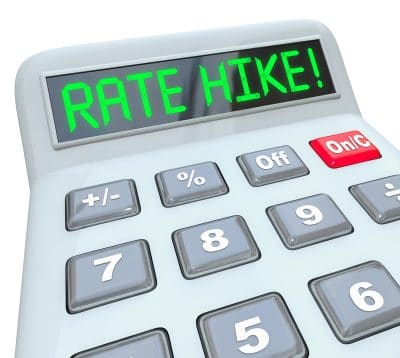
Big Banks Mortgage Rates Rising: What it Means for You
Four of Canada’s Big Six banks have now raised their posted mortgage rates since last week, sparking concern by homebuyers and existing homeowners about the implications.
TD kicked off this round of rate increases last week by raising its various mortgage terms, including an astounding 45-bps increase to its 5-year fixed rate, which jumped from 5.14% to 5.59%. RBC, National Bank of Canada and CIBC have since followed suit, raising rates by 10-30 bps.
Why are the big banks hiking their rates now? The answer is partially related to Canadian bond yields, which rose to a seven-year high of 2.19% last week, and are not hovering around 2.14%. This has driven up mortgage borrowing costs for the banks.
How New Homebuyers Are Affected
Despite the optics, the hikes are unlikely to affect the majority of new homebuyers, at least as far as their contract rate is concerned (i.e., the rate they are actually paying for their mortgage).
That’s because while the banks have raised their posted rates, their “special” and discretionary rates – that is, the rates available to most well qualified borrowers – remain largely unchanged or just modestly higher.
But while a new homebuyer may still be able to secure a relatively competitive mortgage rate, the real challenge will be passing the new stress test, which is based on the benchmark qualifying rate, which in turn is based on the mode average of the Big Six banks’ 5-year posted rates.
How Existing Homeowners Are Affected
Existing homeowners could feel the effects of these rate hikes in two ways: a more difficult stress test to pass should they want to switch lenders at renewal time; and higher penalties should they wish to pay out their fixed mortgage early.
Variable Rates as an Alternative
With mortgage rates on the rise, consumers are taking a long hard look at all of their options in search of ways to keep their costs down.
For certain borrowers, variable rates may be the answer. Some variable rates can still be found for as low as 2.21% for insured or 2.49% for uninsured, according to RateSpy.com.
But that healthy discount compared to fixed rates could quickly evaporate following a few more Bank of Canada rate increases. And that looks likely, with markets still pricing in two more quarter-point hikes to the overnight target rate by the end of the year. That would increase monthly payments for those with adjustable-rate mortgages and lines of credit.
As for the timing of the next hike, most analysts seem to agree that July is the most likely, though Derek Holt of Scotiabank says a May hike isn’t out of the question given that the BoC said at its last meeting it would monitor data very closely in the “weeks” ahead.
What Can You Do?
Rob McLister, RateSpy.com founder, advises that homebuyers who are currently rate shopping would do well to get a pre-approval at today’s rates before they rise any further. He suggests they have the lender review their documents to ensure a full pre-approval as opposed to just a “rate hold.”
Those who already have a mortgage that’s coming up for renewal and who aren’t happy with the rate they’ve been offered by their current lender would be well-served by the expertise of a Mortgage Advisor, McLister wrote. A Mortgage Broker can help compare the savings of breaking the mortgage early and locking in at a better rate elsewhere, or simply help negotiate a more competitive renewal rate.
How Client First Mortgage Solutions Can Help You
About Us – Our Mortgage Advisors have sound relationships with a diverse group of leading lenders. This means more options and better rates for you as home buyer/owner. The connections that Client First Mortgage Solutions has made with industry leading companies and individuals makes them logically the first and last call in the home buying and financing process. Whether you are looking to refinance, renew a current mortgage, purchase a new home or just thinking of buying in the future, call us first!We look forward to guiding you through this experience.
Original Article – Canadian Mortgage Trends – May 1, 2018


